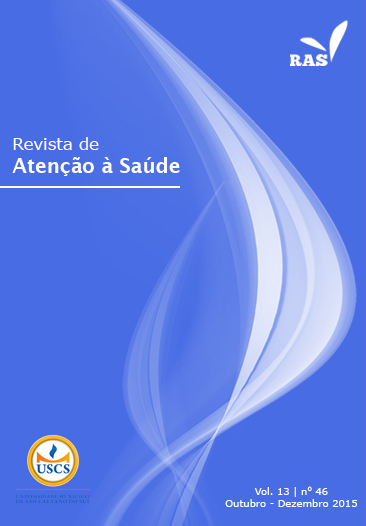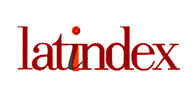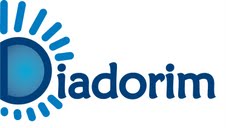INFLUENCE OF NEUROMUSCULAR ELECTRICAL STIMULATION AND KINESIOTHERAPY IN THE RANGE OF MOTION OF THE HANDLE OF HEMIPARETIC SUBJECTS
DOI:
https://doi.org/10.13037/ras.vol13n46.3044Keywords:
Stroke, hemiparesis, electrical stimulation, kinesiotherapy, joint goniometry.Abstract
Introduction: The stroke is considered the main neurological impairment that causes disability amongadults. The hemiparesis is a common motor dysfunction among individuals who have suffered stroke.Neuromuscular Electrical Stimulation (NMES) and kinesiotherapy are resources used in the treatmentof these individuals. Objectives: To investigate the influence of NMES with or without cinesiotherapyin range of motion (ROM) in flexion and extension active of wrists in patients with stroke sequelae.Materials and methods: Eighteen patients were divided into two groups: one was treated NMES theother one with NMES associated with kinesiotherapy, both groups were subject of 16 attendances, beingevaluated before, at the end of treatment and after one and three months after completing the treatment.Results: There was an increase in flexion and wrist extension in both groups within three months aftercompleting the treatment. However, it was found that to increase the extension ROM, the treatment withNMES associated with kinesiotherapy was more effective when compared to the use of NMEE in isolation.Conclusions: These proposed treatments were able to provide increased flexion and wrist extensionof the studied population, however, the treatment with the NMEE associated with kinesiotherapy wasmore effective for increasing the extension ROM.Downloads
References
1. Pompeu SMAA, Pompeu JE, Rosa M, Silva MR. Correlação entre função motora, equilíbrio e força respiratória pós acidente vascular cerebral. Rev Neurociências. 2011;4(19):614-20.
2. Ovando AC, Michaelsen SM, Dias JA, Herber V. Treinamento de marcha, cardiorrespiratório e muscular após acidente vascular encefálico: estratégias, dosagens e desfechos. Rev Fisioter Mov. 2010; 23(2):253-69.
3. Cappelari MM, Grave MTQ. Avaliação do comprometimento sensório-motor de pacientes com diagnóstico de acidente vascular encefálico (AVE) atendidos na clínica-escola de Fisioterapia da Univates. Rev Dest Acad. 2012;61(4):61-72.
4. Soriano FF, Baraldi K. Escalas de avaliação aplicáveis a pacientes pós acidente vascular encefálico. Rev ConSci Saud. 2010;3(9):521-30.
5. Cauraugh JH, Naik SK, Hsu WH, Coombes SA, Holt KG. Children with cerebral palsy: a systematic review and meta-analysis on gait and electrical stimulation. Clinic Rehabil. 2010;24:963-78.
6. Pizzi A, Carlucci G, Falsini C, Verdesca S, Grippo A. Evaluation of upper-limb spasticity after stroke: a clinical and neurophysiologic study. Arch Phys Med Rehabil. 2005;86:410-5.
7. Natalio MA. Desenvolvimento de um instrumento de avaliação clínica da subida e descida de escada em indivíduos com hemiparesia. Rev Terap Manu. 2010;9(46):780-8.
8. Cruz AT. Análise da crioterapia e da estimulação elétrica neuromuscular na extremidade distal do membro superior de pacientes hemiparéticos espásticos [dissertação]. São José dos Campos (SP): Universidade do Vale do Paraíba – Instituto de Pesquisa e Desenvolvimento; 2011.
9. Langhammer B, Lindmark B. Functional exercise and physical fitness post streoke: the importance of exercise maintenance for motor control and physical fitness after stroke. Str Res Treat. 2012;6(24).
10. Nuyens GE, De Weerdt WJ, Spaepen AJ, Kierkens C, Feys HM. Reduction of spastic hypertonia during repeated passive knee movements in stroke patients. Arch Phys Med and Rehabil. 2002; 83(7):930-5.
11. Amorim JCS, Campos D, Carbonero FC. Eficácia da estimulação elétrica neuromuscular em hemiparéticos. Rev Ens Ciência: Cienc. 2011;15(6):195-206.
12. Lucareli PRG, Carlik J, Klotz T. Avaliação das atividades de vida diária pelo Índice de Barthel de pacientes acometidos de acidente vascular encefálico. Rev Fisioter Bras. 2005; 6(2):108-12.
13. Radanovic M. Características do atendimento de pacientes com acidente vascular cerebral em hospital secundário. Arquiv Neuro Psiq. 2000;58(1):99-106.
14. Rowland LPM. Tratado de Neurologia. 10ª ed. Rio de Janeiro: Guanabara Koogan, 2002.
15. Pereira AC, Araujo RC. Estudo sobre eletromiografia de superfície em pacientes portadores de espasticidade. Rev Bras Fisioter. 2002;6(3):127-34.
16. Magee DJ. Avaliação musculoesquelética. 5ª ed. São Paulo: Manole, 2010.
17. Silva DD, Borges ACL, Lima MO, Lima FPS, Freitas STT, Nogueira DV, et al. Resistência ao movimento e atividade eletromiográfica dos músculos flexores e extensores de cotovelo em pacientes hemiparéticos espásticos submetidos à crioterapia e estimulação elétrica neuromuscular. Rev Bras Eng Biomed. 2012;3(28):248-60.
18. Bohórquez IJR., Souza MN, Pino AV. Influência de parâmetros da estimulação elétrica funcional na contração concêntrica do quadríceps. Rev Bras Eng Biomed. 2013;2(29):153-65.
19. Krueger-Beck E, Scheeren EM, Neto GNN, Silveira VL, Nohama P. Efeitos da estimulação elétrica funcional no controle neuromuscular artificial. Revista Neurociências. 2011;19(3):530-41.
20. Rowland LPM. Tratado de Neurologia. 11ª ed. Rio de Janeiro: Guanabara Koogan, 2002.
21. Voos MC, Valle R. Estudo comparativo entre a relação do hemisfério acometido no acidente vascular encefálico e a evolução funcional em indivíduos destros. Rev Bras Fisioter. 2008;12(2):113-20.
22. Rosamond W, Flegal K, Friday G, Furie K, Go A, Greenlund K, et al. Heart disease and stroke statistics – 2007 Update: A report from the American Heart Association statistics committee and stroke statistics subcommittee. Circul. 2007;115:69-171.
23. Lundström E, Terént E. Prevalence of disabling spasticity 1 year after first-ever stroke. Eur J Neurol. 2008;15:533-39.
24. Sommerfeld DK, Eek EU, Svensson AK, Holmgvist LW, von Arbin MH. Spasticity after stroke: Its occurrence and association with motor impairments and activity limitations. Stroke. 2004;35:133-40.
25. Dajpratham P, Kuptniratsaikul V, Kovindha A, Kuptniratsaikul PS, Dejnuntarat K. Prevalence and management of post-stroke spasticity in thai stroke patients: a multicenter study. J Med Assoc Thai. 2009;92(10).
26. Wang RY, Tsai MW, Chan RC. Effects of surface spinal cord stimulation on spasticity and quantitative assessment of muscle tone in hemiplegic patients. J Med Phys Med Rehabil. 1998;77(4).
27. Kroon JR., Ijzerman MJ. Electrical stimulation of the upper extremity in stroke: cyclic versus EMG-triggered stimulation. Clin Rehabil. 2008;22:690-7.
28. Guimarães MTS, Liebano RE. Os efeitos da estimulação elétrica aplicada nos músculos dorsiflexores em pacientes pós-AVE: uma revisão sistemática. Rev ConSci Sau. 2013;12(2):313-20.
29. Woellner SS, Soares AV, Cremonini CR, Poluceno L, Domenech SC, Borges NGJ. Treinamento específico do membro superior de hemiparéticos por acidente vascular encefálico. Arq Catarin Med. 2012;41(3):49-53.
30. Correia ACS, Silva JDS, Silva LVC, Oliveira DA, Cabral ED. Crioterapia e cinesioterapia no membro superior espástico no acidente vascular cerebral. Rev Fisioter Mov. 2010;23(4):555-63.
31. Zuge RW, Manffra EF. Efeitos de uma intervenção cinesioterapêutica e eletroterapêutica na cinemática da marcha de indivíduos hemiparéticos. Rev Fisioter Mov. 2009;22(4):547-56.
32. Salvini TF, Durigan JLQ, Peviani SM, Russo TL. Efeitos da eletroestimulação e do alongamento muscular sobre a adaptação do músculo desnervado – implicações para a fisioterapia. Rev Bras Fisioter. 2012;16(3):175-83.
33. Turton AJ, Britton E. A pilot randomized controlled trial of a daily muscle stretch regime to prevent contractures in the arm after stroke. Clin Rehabil. 2005;19:600-12.
34. Tseng CN, Chen CC, Wu SC, Lin LC. Effects of a range-ofmotion exercise programme. J Adv Nurs. 2007;57:181-91
Downloads
Published
Issue
Section
License
Copyright (c) 2015 Juliana de Oliveira Souza, Suelen de Almeida Silva, Priscila de Oliveira Januário, Ariela Torres Cruz

This work is licensed under a Creative Commons Attribution-NonCommercial-NoDerivatives 4.0 International License.
Policy Proposal for Journals offering Free Delayed Access
Authors who publish in this magazine agree to the following terms:
- Authors maintain the copyright and grant the journal the right to the first publication, with the work simultaneously licensed under a Creative Commons Attribution License after publication, allowing the sharing of the work with recognition of the authorship of the work and initial publication in this journal.
- Authors are authorized to assume additional contracts separately, for non-exclusive distribution of the version of the work published in this magazine (eg, publishing in institutional repository or as a book chapter), with the acknowledgment of the authorship and initial publication in this journal.
- Authors are allowed and encouraged to publish and distribute their work online (eg in institutional repositories or on their personal page) at any point before or during the editorial process, as this can generate productive changes, as well as increase impact and citation of the published work (See The Effect of Open Access).









